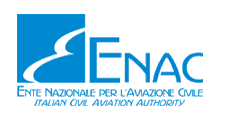Drone Laws - Italy
L’Ente Nazionale per l’Aviazione Civile (ENAC)
- Recreational and Commercial Drone Operators. Based on Italian legislation, “pilots of RPAV (drones) must have a certificate of competence (licence) according to the requirements of Section IV and the provisions referred to Article 37 of ENAC’s Regulation”. This applies to commercial operators regardless the weight, and recreational drones operations with a mass equal to or greater than 250 g.
- Italian laws and regulations on the use of drones current from 11/11/2019.
- Regulation on Remote Piloting Aircraft (Edition 3, 11/11/2019)
- ENAC Drone page and information.
- Frequently Asked Questions about drones from ENAC.
Italy will be subject to the new EU Drone Laws in July 2020. See below for more details from the ENAC website.
On 11 June 2019, the European Commission published in the Official Journal the Delegated Regulation (EU) 2019/945, which sets out the rules for the entry into the market of SAPR and the related Enforcement Regulation (EU) 2019/947 which sets out the rules applicable to SAPR operations, pilots and operators. (translated by google)
These regulations came into force on 1 July 2019 and will become applicable from 1 July 2020.
In order to facilitate the transition of the sector from national to EU legislation, ENAC published on 11 November 2019 the third edition of the Remotely Piloted Aircraft Means Regulation in order to anticipate certain requirements arising from European Regulations, such as the registration of the drone operator and the obligation to mark the individual drone. In addition, the D-Flight platform is identified as a technological infrastructure for the provision of services related to registration, identification, publication of information on geographical zones applicable to SACRs and for the presentation of the declaration by operators. (translated by google)
Disclaimer: While all care and attention is taken to ensure the information provided is correct, it is the responsibility of the user to verify the information and conditions with the relevant civil aviation authority.

